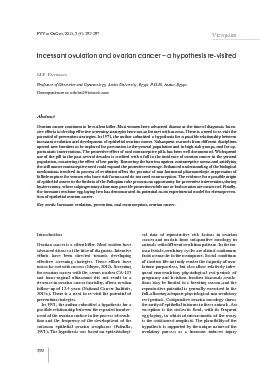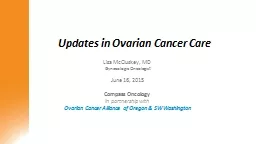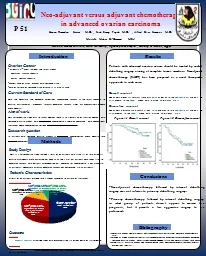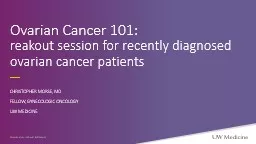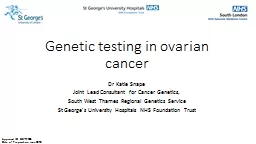PDF-Ovarian cancer is a silent killer. Most women have advanced disease at
Author : debby-jeon | Published Date : 2015-08-12
292 effective screening strategies not so far met with success Moyer 2012and transvaginal ultrasound did not result in a decrease in ovarian cancer mortality after
Presentation Embed Code
Download Presentation
Download Presentation The PPT/PDF document "Ovarian cancer is a silent killer. Most ..." is the property of its rightful owner. Permission is granted to download and print the materials on this website for personal, non-commercial use only, and to display it on your personal computer provided you do not modify the materials and that you retain all copyright notices contained in the materials. By downloading content from our website, you accept the terms of this agreement.
Ovarian cancer is a silent killer. Most women have advanced disease at: Transcript
Download Rules Of Document
"Ovarian cancer is a silent killer. Most women have advanced disease at"The content belongs to its owner. You may download and print it for personal use, without modification, and keep all copyright notices. By downloading, you agree to these terms.
Related Documents

